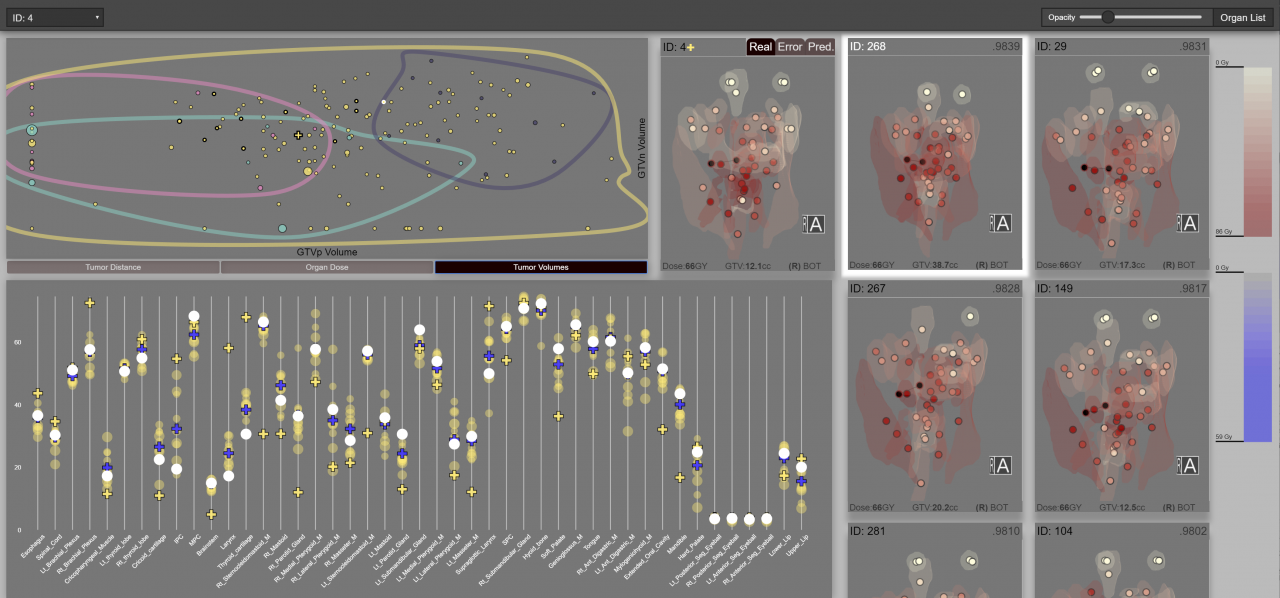|
|
||||||||||||||||||
Cohort-based T-SSIM Visual Computing for Radiation Therapy Prediction and Exploration
Authors: Wentzel, A., Hanula, P., Luciani, T,, Elgohary, B., Canahuate. G., Vock, D., Fuller, C.D., Marai, G.E.
Publication: IEEE Transactions on Visualization and Computer Graphics, IEEE Vis 2019, pp. 1-11 URL: https://doi.org/10.1109/TVCG.2019.2934546 We describe a visual computing approach to radiation therapy (RT) planning, based on spatial similarity within a patient cohort. In radiotherapy for head and neck cancer treatment, dosage to organs at risk surrounding a tumor is a large cause of treatment toxicity. Along with the availability of patient repositories, this situation has lead to clinician interest in understanding and predicting RT outcomes based on previously treated similar patients. To enable this type of analysis, we introduce a novel topology-based spatial similarity measure, T-SSIM, and a predictive algorithm based on this similarity measure. We couple the algorithm with a visual steering interface that intertwines visual encodings for the spatial data and statistical results, including a novel parallel-marker encoding that is spatially aware. We report quantitative results on a cohort of 165 patients, as well as a qualitative evaluation with domain experts in radiation oncology, data management, biostatistics, and medical imaging, who are collaborating remotely. Keywords: Biomedical and Medical Visualization, Spatial Techniques, Visual Design, High-Dimensional Data Funding: NIH Award #NCI-R01CA225190: QuBBD: Precision E –Radiomics for Dynamic Big Head & Neck Cancer Data (Marai, PI) NIH, National Cancer Institute #1R01CA214825-01: SMART-ACT: Spatial Methodologic Approaches for Risk Assessment and Therapeutic Adaptation in Cancer Treatment (Marai, PI) Date: August 22, 2019 Document: View PDF |